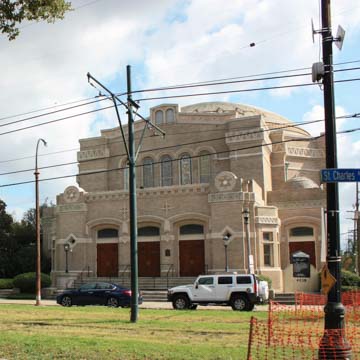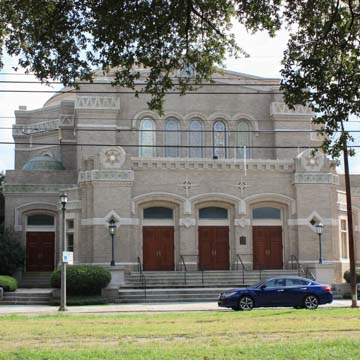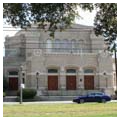Touro Synagogue was named for Judah P. Touro, a descendant of the Touro family of Newport, Rhode Island. A significant figure in New Orleans, he bequeathed his fortune to many charitable institutions and to Touro Hospital, formerly the Hebrew Hospital. Touro Synagogue’s congregation was formed by the merger in 1881 of German and Spanish-Portuguese congregations. Emile Weil won the synagogue’s design competition in 1907 with his scheme for a low-domed, Byzantine-influenced structure, a solution adopted by many synagogues because of Judiasm’s Middle Eastern origins. The synagogue is constructed of beige pressed brick and ornamented with polychrome glazed terra-cotta bands and cornices; the dome is tiled in pale green interspersed with yellow and blue. The main auditorium retains its original appearance. It is covered by a shallow dome, 71 feet in diameter, and has two walls of stained glass windows in varied shades of gold and green.
The multipurpose addition (1989), next to the synagogue on St. Charles Avenue and linked to it by an arcade, echoes, in a simplified and more angular composition, the forms and decoration of the original building. It includes classrooms, a 120-seat chapel, and stained glass windows designed in the late 1980s by New Orleans artists Ida Kohlmeyer and Gene Koss. Nathan Kohlman (1883–1957) designed the Sabbath school at the rear of the Temple, which shows Moorish influences in its colorful entrance composed of three arches framed by a larger arch.


















